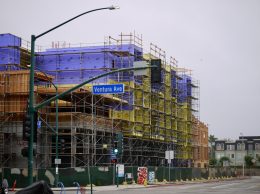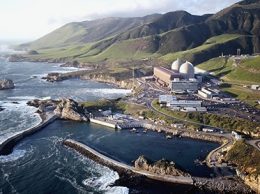Legislature paves way to keep Diablo Canyon open through 2030
IN THIS ARTICLE
- Energy Topic
- Jorge Mercado Author
By Jorge Mercado Thursday, September 1st, 2022
The push by Gov. Gavin Newsom, along with some environmentalists, energy experts and local officials, to extend the life of the Diablo Canyon nuclear power plant succeeded early Sept. 1.
In an extended session, the California Legislature voted overwhelmingly in favor of Senate Bill 846, giving the state the option of keeping the power plant open through 2030, five years past its currently scheduled closure. The bill includes a $1.4 billion forgivable loan made to Pacific Gas and Electric Co., the plant’s owner and operator, to kick-start the extension process.
The loan is expected to be repaid by federal funding, which PG&E is now eligible to apply for to keep the power plant running. If the federal funding does not come through, PG&E must return the $1.4 billion to the state, and Diablo Canyon will shut down in 2025.
PG&E has until Sept. 6 to apply for federal funding from a $6 billion pool under the a new Department of Energy Civil Nuclear Credit program. PG&E was not immediately available for comment.
Diablo Canyon provides about 9% of California’s power, without any carbon emissions, and Newsom and other state officials have said its contributions are necessary for the state to both keep the lights on and meet its goals for reducing emissions.
A description of the bill from Newsom’s office states that if the California Public Utilities Commission determines that enough renewable or other zero-emissions energy sources “have come online in sufficient quantity to meet California’s reliability standards, Diablo Canyon will not be extended.”
The bill was co-authored by State Sen. Bill Dodd, D-Napa, and Assemblymember Jordan Cunningham, R-San Luis Obispo.
Cunningham, whose district includes Diablo Canyon, has long supported keeping the plant open past 2025. In an Aug. 12 public meeting, hosted by the California Energy Commission, he noted that the state, in 2016, had projected a reduced need for the energy produced by Diablo Canyon. But more recent projections by the governor’s office and the Energy Commission indicated that if the plant is decommissioned in 2025, by 2026, the state could be in a 2.5-gigawatt shortage on a random September night.
“We simply are not where we thought we’d be with renewable energy production and coupling that with storage,” Cunningham said. “All of these goals we have, whether it’s housing, decarbonization, electrifying transportation, all have one thing in common, and that is you’re going to need to produce, and California’s energy grid will need to be more robust, more reliable, and bigger and expanded compared to the present day.”
Cunningham could not immediately be reached for additional comment after the bill passed.
Senate Bill 846 also includes $160 million in new funding that will be credited to San Luis Obispo County, according to REACH — the Regional Economic Action Coalition, a San Luis Obispo-based economic development nonprofit.
“Our legislators have brokered a sound deal that will help the state meet its clean energy goals while also protecting and supporting local cities, the workforce and community plans for a post-Diablo future,” REACH CEO Melissa James said in a statement. “The inclusion of $160 million for Diablo Canyon land conservation and economic development is a huge win for the Central Coast and shows what advocating with a united voice, as regional leaders did over the last several weeks, can accomplish in state and national decisions.”
She added that the bill will help retain jobs at Diablo Canyon, which is one of the largest employers in San Luis Obispo County, at $225 million in annual payroll.
It also extends employee retention benefits through the life of the plant and protects the $85 million paid out in local mitigation funding under the original closure settlement.
The passing of SB 846 reverses the state’s 2016 decision to begin decommissioning Diablo Canyon by 2024 and fully close the operation by 2025.
Since then, lawmakers have pointed with greater concern to the threat of rolling blackouts and lack of renewable energy sources and energy storage. California wants to produce all of its electricity from clean sources by 2045.
Newsom’s first proposed legislation was to extend the life of the plant another 10 years, until 2035. With SB 846, lawmakers decided to extend it by five years instead.










